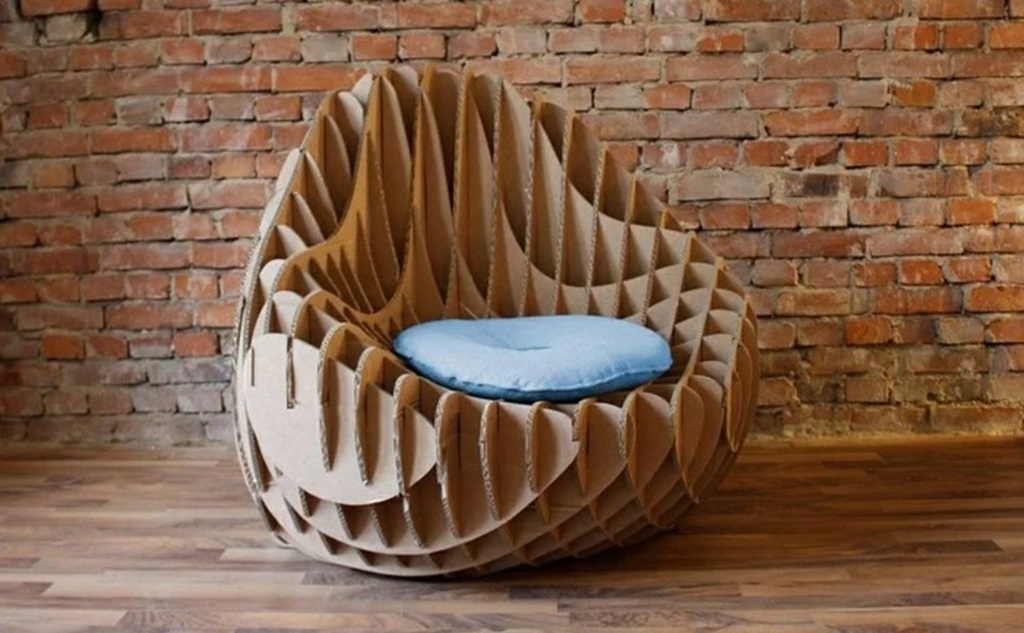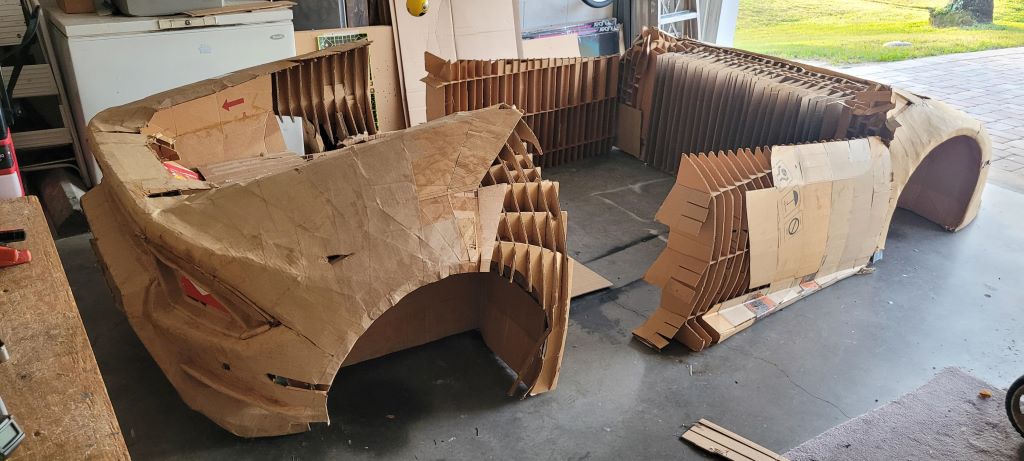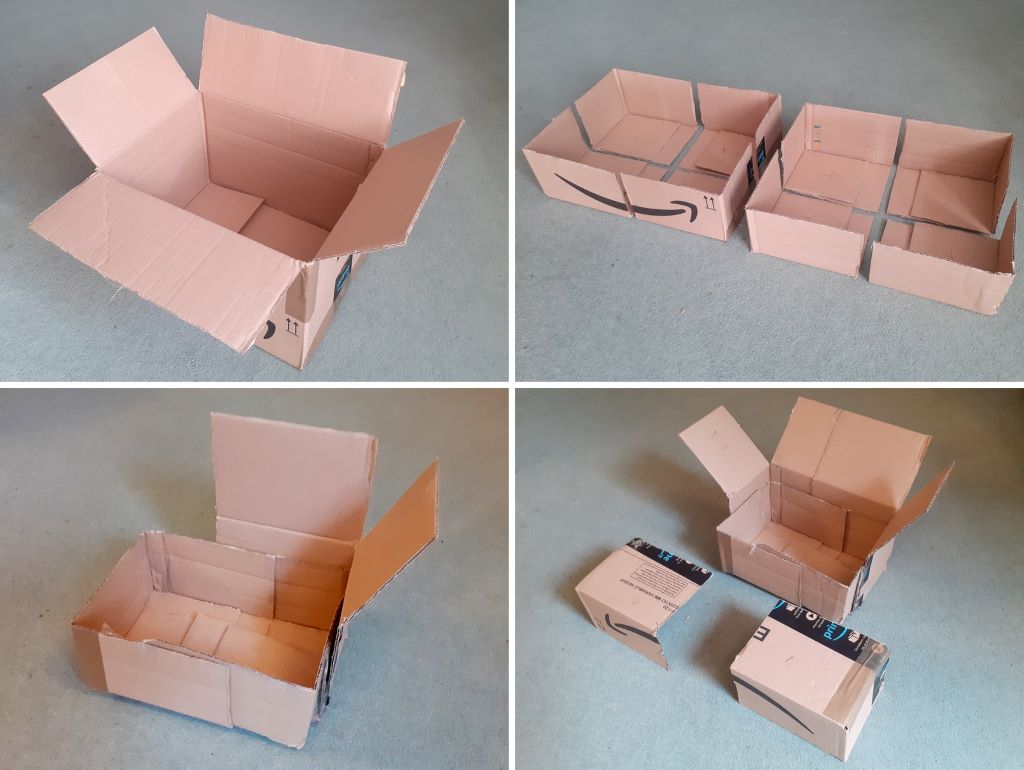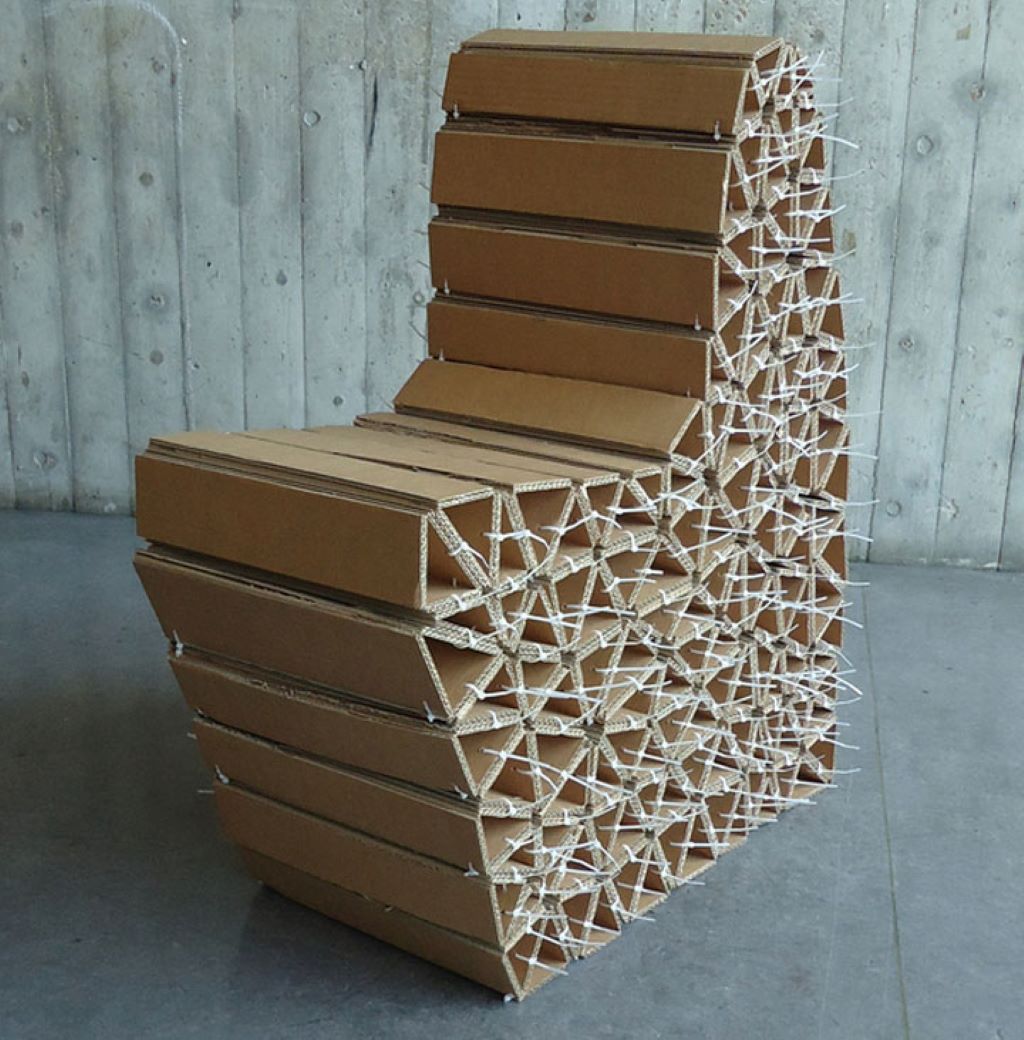
12 Jan How Do You Make Cardboard Tougher?
Cardboard is a versatile material that we often take for granted. From product packaging to arts and crafts, this affordable and recyclable material has countless uses around the home. However, cardboard has its limitations, as its structure can make it flimsy and prone to damage when subjected to repeated handling or moisture. Fortunately, there are several techniques you can use to reinforce cardboard and make it more rigid and durable for your needs.
Why Does Cardboard Need Reinforcing?

Cardboard is composed of three layers – two outer linerboards sandwiching a fluted corrugated layer in the middle. This rippled structure gives cardboard its flexibility and shock absorption. However, the rippled flutes also make cardboard less rigid, causing it to bend and deform more easily. The paper materials that make up cardboard are also sensitive to moisture, which can soften the fibers over time.
Reinforcing cardboard improves its strength and prevents sagging, tearing or buckling under pressure. Some key benefits of reinforcing cardboard include:
- Increased rigidity and sturdiness
- Ability to withstand more weight and force
- Resistance to damage from regular handling and transportation
- Protection against moisture and humidity
- Extended lifespan of the cardboard material
Explore also: How to make cardboard stronger
How to Add Rigidity to Cardboard
There are several simple yet effective techniques to add rigidity and make cardboard tougher:
1. Laminate with Packing Tape
Packing tape is an inexpensive and easy way to reinforce cardboard. Simply apply strips of tape to both sides of the cardboard, overlapping the edges slightly. The tape laminate adds a protective surface layer on both sides, keeping the inner structure rigid. Packing tape laminating is ideal for lightweight craft projects or temporary repairs.
2. Coat with Mod Podge
Mod Podge is a versatile acrylic sealant and glue that works as an excellent cardboard strengthener. Simply brush a layer of Mod Podge onto both outer sides of the cardboard and let dry fully. The acrylic coating seals and stiffens the cardboard fibers, while allowing it to retain flexibility unlike rigid glues. Mod Podge is suitable for arts and crafts with cardboard.
3. Decoupage with Glue & Paper
For a decorative way to fortify cardboard, try decoupage using scrapbook paper and glue. Brush on a thin layer of glue or Mod Podge onto the cardboard surface. Smooth on your desired paper cut-outs or scraps, then brush on more glue to coat and seal the paper layer. This creates a sturdier cardboard laminate in any desired pattern or design.
4. Reinforce With Duct Tape
For a quick and easy technique, apply strips of duct tape to the outer cardboard sides. Overlap the edge of each strip by 1-2 inches to create a surface layer, pressing down firmly to adhere. The tape provides extra strength and water resistance. Duct tape reinforcing is great for temporary repairs or projects.
5. Laminate with Contact Paper
Contact paper or self-adhesive vinyl sheets can be used to cover both sides of cardboard for added protection. Simply measure and cut contact paper to size, peel off the backing paper, and stick it firmly onto the cardboard surface while smoothing out any bubbles. The waterproof vinyl coating helps to strengthen and reinforce the cardboard structure.
6. Apply Wood or Battens
You can sandwich cardboard between wooden battens (long strips of wood) to reinforce it and prevent bending. Measure and cut battens to size. Apply wood glue or construction adhesive to the battens, then position them along the inner cardboard edges on both sides and clamp together until set. The wood braces strengthen the cardboard and enable upright support.
7. Create Cardboard Laminates
For heavy-duty reinforcement, create cardboard laminates by gluing together multiple alternating layers of cardboard with wood glue or epoxy resin. Stack 3-5 cardboard pieces in alternating directions, applying adhesive between each layer. Clamp tightly and allow to fully cure before use. The cross-layering creates very rigid reinforcement against bending and pressure.
8. Coat with Epoxy Resin
Applying a layer of epoxy resin yields extremely rigid, waterproof cardboard reinforcement. Mix the epoxy thoroughly and spread an even layer onto the cardboard surface using a foam brush or roller. Let the epoxy cure fully before use. The glass-like coating makes the cardboard surface highly durable and impact-resistant while maintaining its shape.
9. Use Fiberglass & Resin
For industrial-level reinforcement, fiberglass and resin can be used to create super sturdy cardboard composites. Cut fiberglass mesh to size and affix it to the cardboard using small amounts of epoxy resin. Once set, apply more resin to fully saturate the fiberglass. This creates a lightweight cardboard laminate with immense strength.
Tips for Effective Cardboard Reinforcement

Follow these tips to ensure your cardboard reinforcement is successful and long-lasting:
- Use high-quality, thick cardboard to start with for best results
- Apply even pressure and smooth out bubbles when laminating to prevent weak spots
- Allow all adhesives to cure fully before use per instructions
- Avoid over-saturating cardboard with liquid adhesives to prevent warping
- Test reinforced cardboard to ensure it achieves desired durability before use
- Consider both outer layers and edge reinforcement to fortify the entire structure
- Touch up any minor damage over time to maintain integrity
Reinforced cardboard boasts greatly enhanced durability compared to plain cardboard. With the right technique, you can create sturdy cardboard structures tailored to your specific demands. From packaging to furniture and much more, the possibilities are endless!
Making Cardboard Water-Resistant
Since cardboard absorbs moisture easily, reinforcing techniques alone may not prevent water damage over time. Here are some extra tips to also make your cardboard projects more water-repellent and long-lasting:
Seal With Waterproof Spray Paint
Apply 2-3 thin coats of spray paint formulated for plastics or outdoor use, allowing it to fully dry between coats. The paint seals the cardboard pores and creates a protective barrier. Avoid using indoor or glossy paints which may not adhere well.
Use Wax Paper
Cut sheets of wax paper slightly larger than your cardboard item. Brush on a layer of glue or Mod Podge on the cardboard surface, then firmly press on the wax paper, smoothing out any air bubbles. The wax paper acts as a water-repellent sealant to fortify the cardboard against moisture damage.
Coat With Polyurethane
Polyurethane formulas such as Minwax provide a super tough water-resistant seal for porous materials like cardboard. Use a foam brush to apply 2-3 layers as directed, sanding lightly between coats. Allow the polyurethane to cure fully before use for best moisture protection.
Apply Self-Adhesive Film
Self-adhesive vinyl films like contact paper can help waterproof cardboard when laminated onto both sides. Apply the adhesive film securely, heating it with a hair dryer during application to bond it tightly to the cardboard substrate and eliminate any trapped air pockets.
Use Heat To Seal
A simple way to waterproof corrugated cardboard is by using low heat from a heat gun to seal the outer paper layers together. Gently sweep the heat gun across both sides to melt the fibers slightly, closing the surface pores against moisture. Avoid excessive heat which may scorch or ignite the cardboard.
With a combination of reinforcing techniques plus a moisture barrier, you can transform ordinary cardboard into sturdy, hardened creations that withstand the elements and stand the test of time!
Reinforced Cardboard Project Ideas

Here are some fun and functional project ideas to make the most of sturdier cardboard:
Tabletop Gaming Terrain
Create modular hills, ruins, walls and more to build epic tabletop gaming landscapes. Reinforce with any method, then get creative with paints and flocking.
Outdoor Furniture
Make inexpensive yet sturdy outdoor chairs, tables, plant stands and benches reinforced with wood, epoxy or duct tape lamination.
Playhouses & Forts
Bring cardboard playhouses, rockets, forts and other kids’ structures to life by reinforcing the walls, floors and roof areas for greater durability.
Shelving Units
Reinforce flat pack-style cardboard shelves with edge battens and coat with polyurethane for moisture-resistant storage units.
Shipping Crates
Waterproof reinforced crates make great indestructible shipping and storage containers for heavy tools, supplies and other goods.
Costume Armor & Props
Create realistic cardboard armor and props for costumes like medieval knights or sci-fi robots using laminating and sealing techniques.
Architectural Models
Fashion intricately assembled and detailed building models from reinforced cardboard and seal from moisture for preservation.
With sturdier cardboard, you’re only limited by your imagination. Build whatever your heart desires using these techniques for reinforcement against the elements, pressure and regular wear and tear.
FAQs
What’s the best glue for reinforcing cardboard?
Wood glue or carpenter’s glue provides very strong adhesion for cardboard when clamped. Epoxy resin also creates an extremely rigid bond. White glues can be used for lighter projects. Avoid liquid glues like Elmer’s which can warp cardboard.
Can you make cardboard waterproof?
Yes, sealing cardboard with coatings like polyurethane, epoxy or self-adhesive vinyl makes it water-resistant. Wax paper and spray paint also help make cardboard waterproof. Apply to both outer surfaces for protection.
How do you strengthen cardboard for storage?
Laminating cardboard box surfaces with packing tape improves rigidity for storage. Battens or plywood on the edges and corners also reinforce boxes carrying heavier items. Use water-repellent coatings inside boxes to protect contents.
Does Mod Podge make cardboard stronger?
Yes, brushing on 1-2 coats of Mod Podge seals the cardboard outer fibers together into a more rigid structure. It adds surface strength while allowing the cardboard to flex slightly unlike rigid glues.
Can you put resin on cardboard?
Epoxy and polyester casting resins can be poured or brushed onto cardboard to create a super hard, durable plastic coating. Seal any interior cardboard seams first with caulk to prevent leaks before applying liquid resin.
Conclusion
Reinforcing cardboard allows you to get more versatility out of this humble material. With techniques like taping, gluing, coating and laminating, you can transform flimsy cardboard into sturdy structures that withstand rough handling and outdoor weathering. Just as these tips ensure the longevity of cardboard creations, understanding how long a skateboard helmet lasts is crucial for ensuring the continued safety of riders. Whether your project calls for a little extra rigidity or complete waterproofing, these tips will help cardboard stand the test of time. Put these methods into practice in your next cardboard creation and get ready for compliments on your rock-solid cardboard handiwork.

Sorry, the comment form is closed at this time.